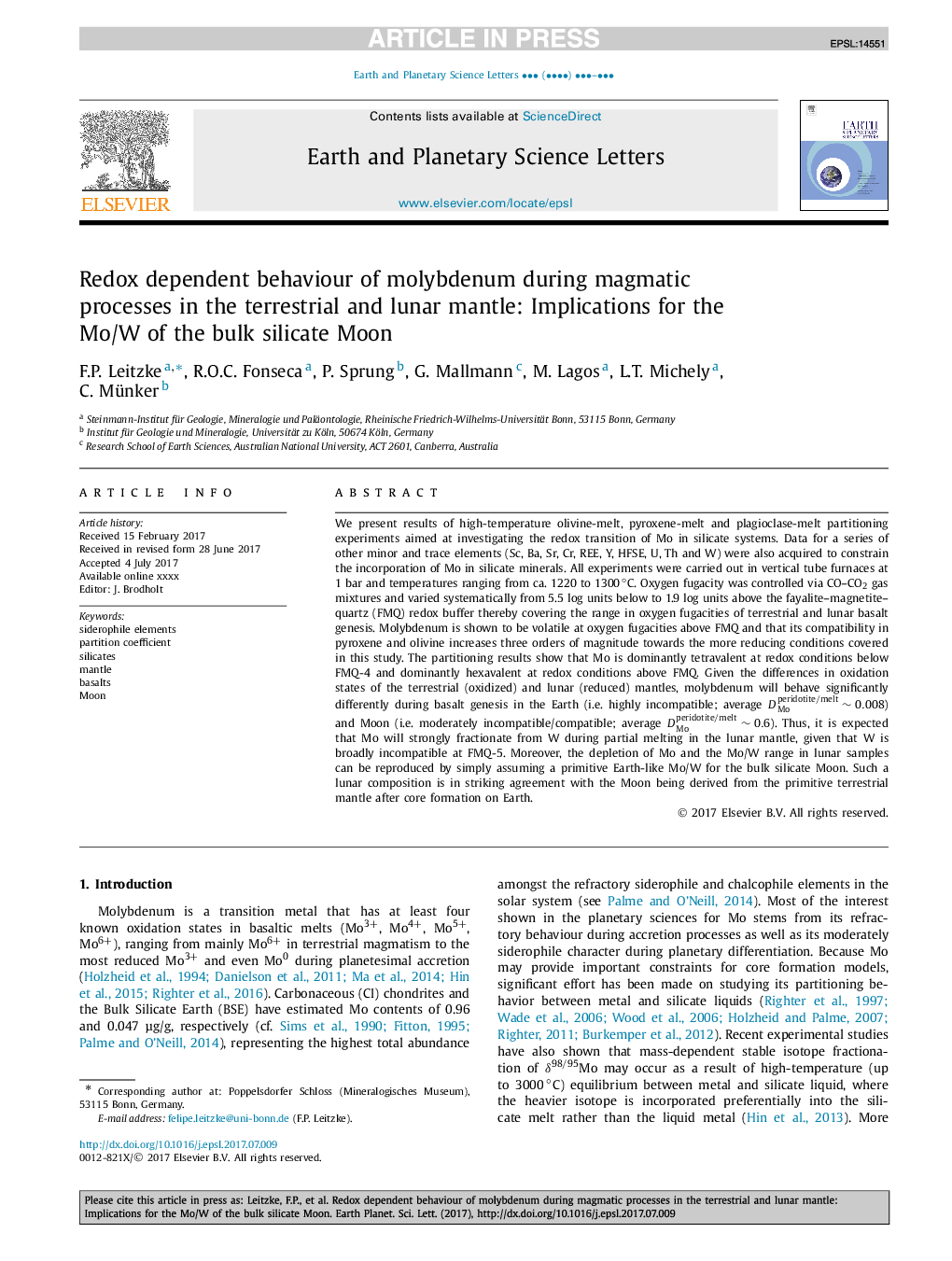| کد مقاله | کد نشریه | سال انتشار | مقاله انگلیسی | نسخه تمام متن |
|---|---|---|---|---|
| 5779759 | 1634682 | 2017 | 13 صفحه PDF | دانلود رایگان |
عنوان انگلیسی مقاله ISI
Redox dependent behaviour of molybdenum during magmatic processes in the terrestrial and lunar mantle: Implications for the Mo/W of the bulk silicate Moon
دانلود مقاله + سفارش ترجمه
دانلود مقاله ISI انگلیسی
رایگان برای ایرانیان
کلمات کلیدی
موضوعات مرتبط
مهندسی و علوم پایه
علوم زمین و سیارات
علوم زمین و سیاره ای (عمومی)
پیش نمایش صفحه اول مقاله

چکیده انگلیسی
We present results of high-temperature olivine-melt, pyroxene-melt and plagioclase-melt partitioning experiments aimed at investigating the redox transition of Mo in silicate systems. Data for a series of other minor and trace elements (Sc, Ba, Sr, Cr, REE, Y, HFSE, U, Th and W) were also acquired to constrain the incorporation of Mo in silicate minerals. All experiments were carried out in vertical tube furnaces at 1 bar and temperatures ranging from ca. 1220 to 1300â°C. Oxygen fugacity was controlled via CO-CO2 gas mixtures and varied systematically from 5.5 log units below to 1.9 log units above the fayalite-magnetite-quartz (FMQ) redox buffer thereby covering the range in oxygen fugacities of terrestrial and lunar basalt genesis. Molybdenum is shown to be volatile at oxygen fugacities above FMQ and that its compatibility in pyroxene and olivine increases three orders of magnitude towards the more reducing conditions covered in this study. The partitioning results show that Mo is dominantly tetravalent at redox conditions below FMQ-4 and dominantly hexavalent at redox conditions above FMQ. Given the differences in oxidation states of the terrestrial (oxidized) and lunar (reduced) mantles, molybdenum will behave significantly differently during basalt genesis in the Earth (i.e. highly incompatible; average DMoperidotite/meltâ¼0.008) and Moon (i.e. moderately incompatible/compatible; average DMoperidotite/meltâ¼0.6). Thus, it is expected that Mo will strongly fractionate from W during partial melting in the lunar mantle, given that W is broadly incompatible at FMQ-5. Moreover, the depletion of Mo and the Mo/W range in lunar samples can be reproduced by simply assuming a primitive Earth-like Mo/W for the bulk silicate Moon. Such a lunar composition is in striking agreement with the Moon being derived from the primitive terrestrial mantle after core formation on Earth.
ناشر
Database: Elsevier - ScienceDirect (ساینس دایرکت)
Journal: Earth and Planetary Science Letters - Volume 474, 15 September 2017, Pages 503-515
Journal: Earth and Planetary Science Letters - Volume 474, 15 September 2017, Pages 503-515
نویسندگان
F.P. Leitzke, R.O.C. Fonseca, P. Sprung, G. Mallmann, M. Lagos, L.T. Michely, C. Münker,